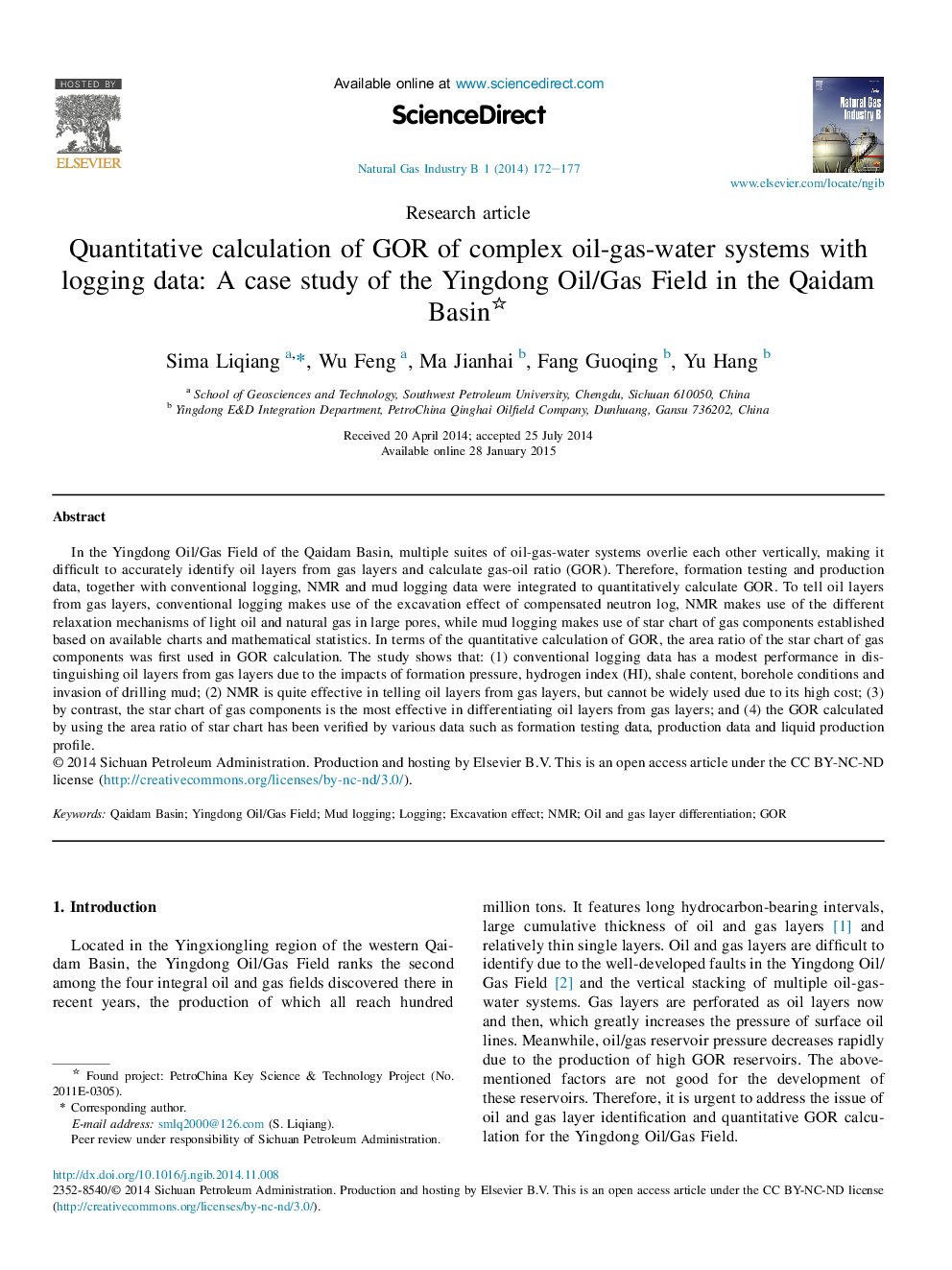| Article ID | Journal | Published Year | Pages | File Type |
|---|---|---|---|---|
| 1747866 | Natural Gas Industry B | 2014 | 6 Pages |
In the Yingdong Oil/Gas Field of the Qaidam Basin, multiple suites of oil-gas-water systems overlie each other vertically, making it difficult to accurately identify oil layers from gas layers and calculate gas-oil ratio (GOR). Therefore, formation testing and production data, together with conventional logging, NMR and mud logging data were integrated to quantitatively calculate GOR. To tell oil layers from gas layers, conventional logging makes use of the excavation effect of compensated neutron log, NMR makes use of the different relaxation mechanisms of light oil and natural gas in large pores, while mud logging makes use of star chart of gas components established based on available charts and mathematical statistics. In terms of the quantitative calculation of GOR, the area ratio of the star chart of gas components was first used in GOR calculation. The study shows that: (1) conventional logging data has a modest performance in distinguishing oil layers from gas layers due to the impacts of formation pressure, hydrogen index (HI), shale content, borehole conditions and invasion of drilling mud; (2) NMR is quite effective in telling oil layers from gas layers, but cannot be widely used due to its high cost; (3) by contrast, the star chart of gas components is the most effective in differentiating oil layers from gas layers; and (4) the GOR calculated by using the area ratio of star chart has been verified by various data such as formation testing data, production data and liquid production profile.
